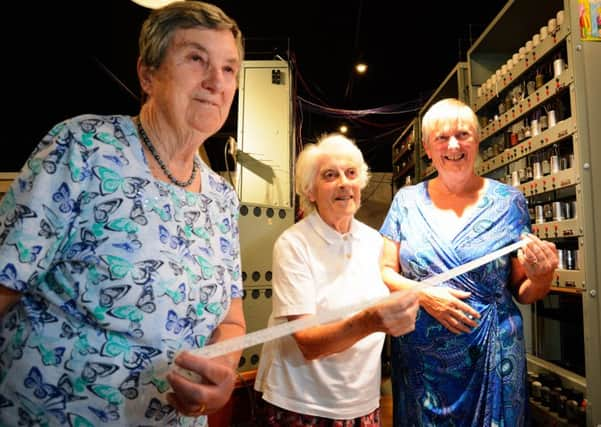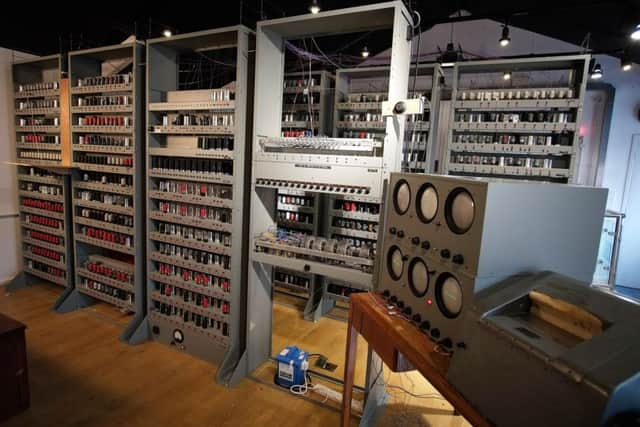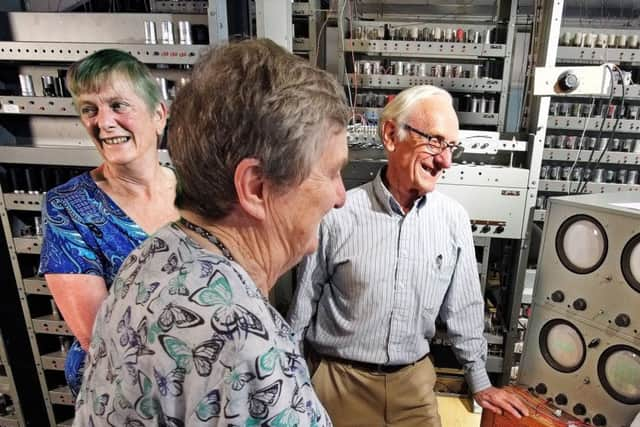Veterans visit to check computer reconstruction


The Electronic Delay Storage Automatic Calculator (EDSAC) veterans took a tour of The National Museum of Computing to see the latest stage of the reconstruction of the 1950’s Cambridge University computer.
The original computer was the first to enter service at a university and transformed research methods, contributing to at least three Nobel prizes.
Advertisement
Hide AdAdvertisement
Hide AdThe historic machine is now being reconstructed at the museum and expected to be operational in 2017, almost seven decades after the original machine ran its first program.


The visiting EDSAC veterans – Joyce Wheeler, then an astronomy postgraduate student, and Margaret Marrs, an EDSAC operator – were impressed at the authenticity of the reconstruction and gave the current EDSAC team valuable details about how they used it. They were joined by Liz Howe, an operator of EDSAC 2, who was able to speak of the people who worked in the Cambridge Mathematical Laboratory including staff and users.
Andrew Herbert, leader of the EDSAC Project, said: “In reconstructing EDSAC, photographs and some documentation have been available, but it has been essential for the team to get into the mindset of the original creators to be able to fill in many unrecorded details. Thankfully the EDSAC veterans have confirmed that the guesses that we’ve had to make have been correct.
“The most fascinating aspect of their recollections is the social history of day-to-day working with an early computer. Strikingly, many women were computer operators and users back then, a balance that today’s computing industry is striving to re-establish. Working boundaries were obviously much more flexible then and we learned how the engineers worked very closely with the operators and users. But it was certainly tough for the first programmers - they really were thrown in at the deep end and had to teach themselves the new skill of programming.”
Advertisement
Hide AdAdvertisement
Hide AdResearcher and programmer Joyce Wheeler recalled: “There were notes describing EDSAC and I remember going to the lab to read it all through and to do the exercises at the back. They were very important in learning how to program!”


As the EDSAC project nears completion, the focus is starting to shift from hardware to software. In many respects, coding EDSAC marks the beginning of professional programming and the team was fascinated to learn about many nearly forgotten characters who pioneered software development with EDSAC.
Joyce remembered: “My husband, David Wheeler, and research student Geoff Cook had set up the machine to seek prime numbers when the engineers wanted to run something. They would always use their prime numbers program during quiet periods and each time it would re-start where it had left off.” That began a tradition of seeking primes that continued through to Titan (effectively EDSAC 3) and even to this day.
Impressed by the reconstruction team’s work, Margaret Marrs had a gleam in her eye when she made her one criticism: “It’s much too clean!” She was also able to confirm that the original EDSAC did have a loudspeaker and, nearly seven decades on, was able to give an imitation of how it sounded.
Advertisement
Hide AdAdvertisement
Hide AdThe EDSAC Project is expected to be completed in 2017 and there are plans to enable students on the Museum’s Education programme to bring their prepared and debugged programmes which will be punched as EDSAC paper tapes and run on the machine.
The ongoing reconstruction can be seen by visitors to the Museum during public opening hours: www.tnmoc.org/visit
The full story of the EDSAC Project can be seen in text and video at www.edsac.org